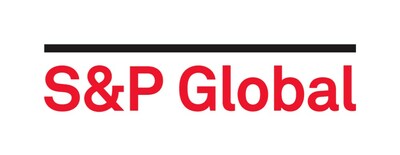S&P Global Partners with Eightfold AI on Innovative Talent Intelligence Platform, Advancing Capabilities of Company’s Future-Ready Workforce
- Strategic partnership leverages Eightfold AI’s native talent intelligence to strengthen workforce development for the future
- Engagement empowers S&P Global employees with skills-based career mobility and personalized learning
NEW YORK, Oct. 23, 2025 /PRNewswire/ — S&P Global (NYSE: SPGI) today announced a strategic collaboration with Eightfold AI, a leading AI-native talent intelligence platform, to strengthen workforce development and enable skills-based career mobility across the company.

Adopting Eightfold AI’s Talent Design framework will help S&P Global blend human expertise with advanced AI capabilities to enhance skills-based career architecture, benchmark roles against global markets, and unlock data-driven insights to prepare its workforce for the future of work.
S&P Global will leverage Eightfold AI’s expertise in navigating the evolving workforce challenges of today’s global economy to empower employees to discover new internal career opportunities, access personalized learning, and build future-ready skills aligned with the organization’s business needs. Key capabilities include:
- Skills-based career pathing that connects employees with career opportunities across the organization
- Curated learning and upskilling recommendations to build individualized future-ready capabilities
- Talent intelligence at scale to increasingly align S&P Global’s workforce development with long-term business strategy
“S&P Global has long championed AI adoption and upskilling as part of our workforce strategy through our EssentialTECH education, mandatory ‘AI for Everyone’ employee training, and internal tools including Kensho Spark Assist. This partnership with Eightfold AI marks another milestone in our commitment to propelling our people forward by equipping our workforce with the skills and opportunities to thrive during this era of transformative change,” said Girish Ganesan, Chief People Officer at S&P Global. “We are creating new pathways for career growth and internal mobility while building capabilities that accelerate innovation and deliver even greater impact for our customers; Eightfold AI’s skills-based approach complements our existing training programs and offerings and reinforces our vision for a future-ready workforce.”
“We are pleased to work with S&P Global on this workforce intelligence AI initiative, which aligns perfectly with its stature as a leading provider of essential intelligence to global markets,” said Ashutosh Garg, Co-Founder and CEO of Eightfold AI. “Eightfold AI believes that valuing human insight is indispensable to successful AI-driven initiatives and this collaboration showcases the power of combining human insight with AI to unlock additional potential.”
To learn more about S&P Global’s talent and career opportunities, visit: www.spglobal.com/careers
Learn more about Artificial Intelligence at S&P Global:
https://www.spglobal.com/en/research-insights/market-insights/artificial-intelligence
Media Contact:
Orla O’Brien
S&P Global
+1 857-407-8559
orla.obrien@spglobal.com
About S&P Global
S&P Global (NYSE: SPGI) provides essential intelligence. We enable governments, businesses and individuals with the right data, expertise and connected technology so that they can make decisions with conviction. From helping our customers assess new investments to guiding them through sustainability and energy transition across supply chains, we unlock new opportunities, solve challenges and accelerate progress for the world.
We are widely sought after by many of the world’s leading organizations to provide credit ratings, benchmarks, analytics and workflow solutions in the global capital, commodity and automotive markets. With every one of our offerings, we help the world’s leading organizations plan for tomorrow, today. For more information, visit www.spglobal.com.
SOURCE S&P Global


